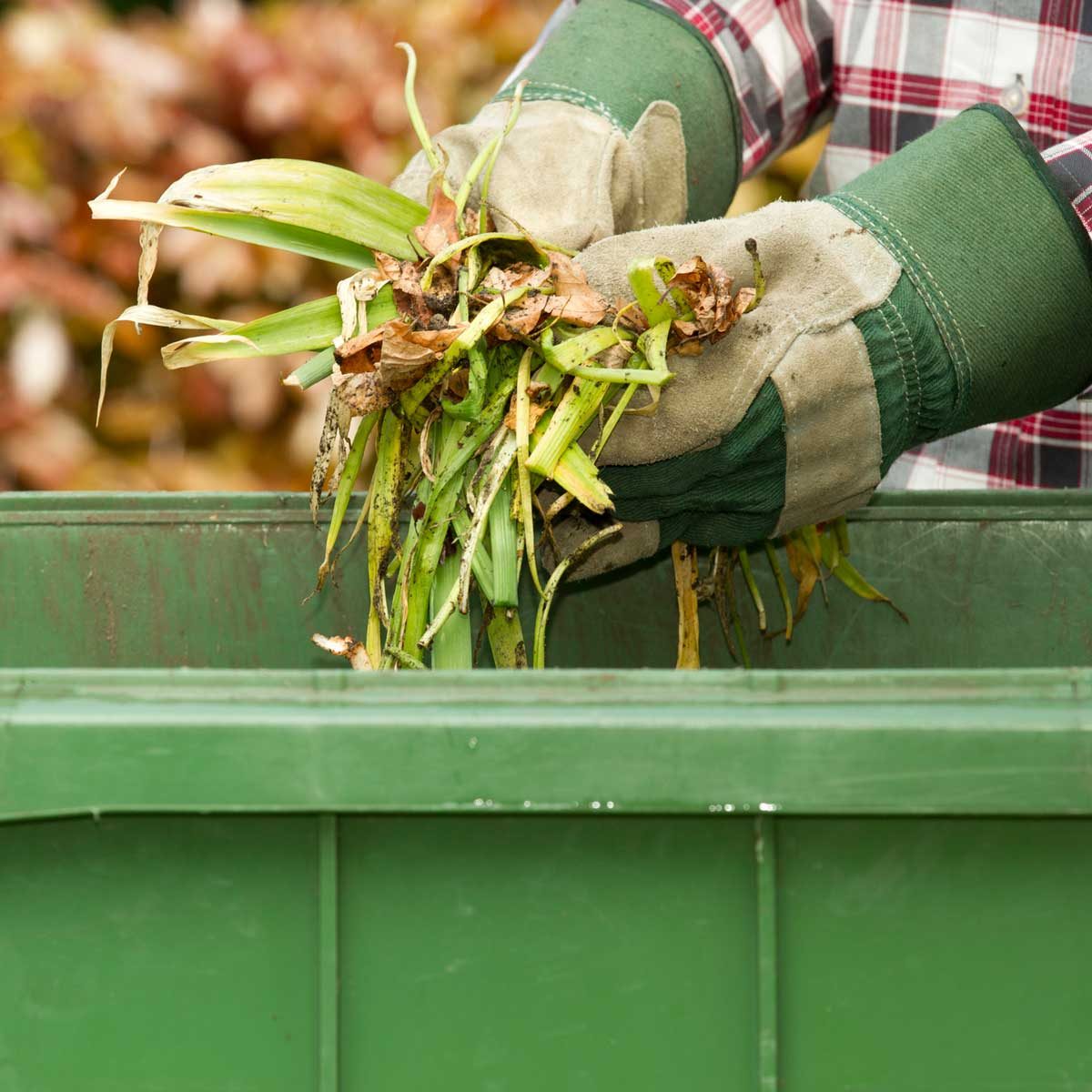Enrich your lawn and garden with these economical, chemical-free greenscaping practices.

Here’s What to Do With Yard Waste

“Food scraps and yard waste together currently make up more than 28 percent of what we throw away,” according to the United States Environmental Protection Agency (EPA). But there is a greener, more cost-effective alternative to traditional yard waste disposal methods.
Instead of tossing your post-pruning piles, take the greenscaping approach and recycle yard waste at home. These three simple steps will give you the lush, healthy yard of your dreams in a sustainable, chemical-free way.
On This Page
Grasscycle for Faster Mowing and a Greener Lawn
Grasscycling means leaving clippings on your lawn after mowing. This is one of the simplest ways to recycle yard waste because it eliminates an unnecessary step — bagging and removing the clippings. You may need to mow more often to maintain the desired length, but without the bagging it will take less time — 38 percent less, according to the EPA. Mowing a little more often seems like a fair trade off for making the chore easier and greener.
Plus, frequent mowing benefits your lawn’s health. The University of Maryland recommends mowing your lawn when it’s dry, never trimming more than one-third of its length at a time, and sharpening your mower blades every four to six weeks.
When trimmed to the correct size, the clippings fall beneath the grass and decompose quickly to add nutrients back into your soil. The EPA, says those extra nutrients can reduce the need for store-bought nitrogen fertilizer by “25 to 50 percent,” saving you time and money. The University of Minnesota recommends the clippings be no longer than an inch because longer pieces may smother the grass.
Recycle Yard Waste with DIY Mulch
Grass, leaves and wood scraps can be used as organic, free mulch around your flower beds and gardens. Weeds struggle to pop up through mulch, and the organic materials help regulate temperature and moisture while enriching your soil.
You’ll find ample natural mulch in the fall season. Shred autumn leaves with your lawn mower before bagging them with your grass clippings. Then, spread a thin layer at the base of your plants.
If you have lots of wood scraps from trimming or removing a tree, make your own wood chips. Instead of purchasing and hauling mulch bags from a home improvement store, rent a wood chipper or shredder. Wood mulch lasts longer than grass and leaves, and it provides a more traditional appearance to your landscaping.
Recycle Yard Waste and Food Scraps with Composting
Composting is a common part of the zero-waste lifestyle, but it can sound intimidating. Don’t worry; it’s much easier than you think. You can even start a small, indoor compost bin just for kitchen scraps. If you want to recycle kitchen and yard waste items, building a large backyard compost bin or barrel tumbler is the way to go. You can also find ready-made composting containers and accessories online.
The EPA’s biggest and most basic backyard composting tip is to get your ratio right. Your three ingredients are greens, browns and water. Grass clippings, flowers, leaves, coffee grounds and fruit and vegetable scraps are all examples of greens. Twigs, dead leaves, cardboard and sawdust are all examples of browns. Although there is some routine maintenance, including watering and turning the pile, composting is an easy way to recycle yard waste and bolster the health of your yard.



















